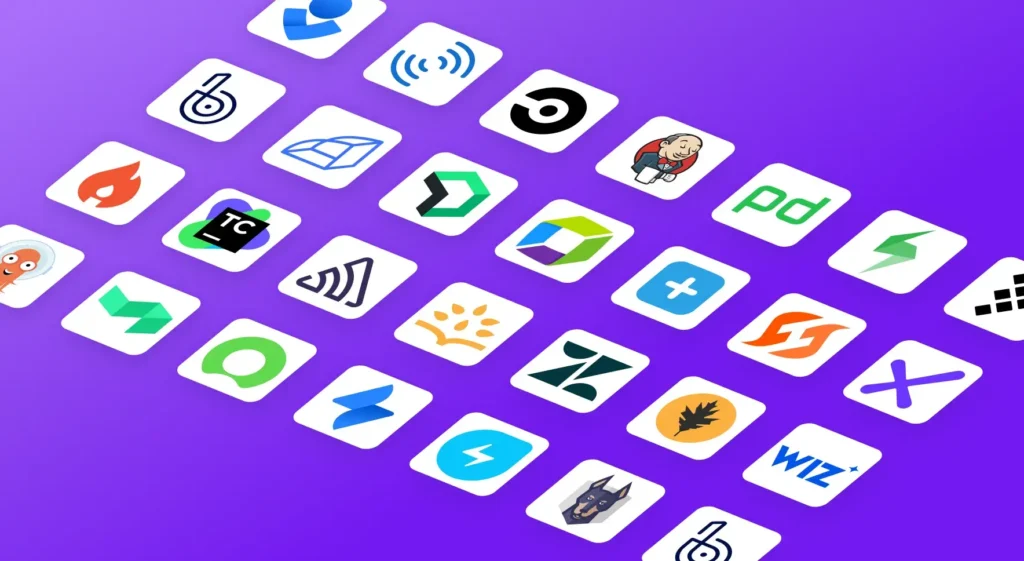What is Software Capitalization?
What is Software Capitalization?
Software capitalization is an accounting practice where the costs of developing or obtaining software are treated as a long-term investment, similar to R&D, rather than an immediate expense. This means these costs, which can include expenses like employee wages, consultant fees, and related travel expenses, are recorded as assets on the balance sheet and gradually expensed over time through amortization or depreciation, typically over the software’s useful life.
The rationale behind this concept is that the cost of development doesn’t always align with the period when revenues are earned. By capitalizing these costs, you can match them against future revenues, providing a more accurate picture of your company’s financial performance.
For instance, if you spent a significant amount developing a new software product this year, but don’t expect to generate revenue from it until next year, capitalization allows you to spread those costs over time and recognize them alongside future revenue.
This approach not only aligns with the matching principle in accounting, but also allows for better alignment between financial and operational metrics, ultimately supporting better decision-making and performance evaluation.
Software Capitalization vs. Expensing
Software Capitalization vs. Expensing
Software capitalization and software expensing are two different accounting methods for handling software costs. Capitalization treats these costs as a long-term investment, recording them as an asset on the balance sheet and gradually expensing them over time through amortization. This spreads the cost over the software’s useful life, similar to depreciating a physical asset like a computer.
Expensing, conversely, treats software costs as an immediate expense on the income statement, impacting profitability in the current period. Choosing between capitalization and expensing depends on factors like the type of software, software’s purpose, its expected lifespan, and accounting standards, ultimately affecting how a company’s financial performance is reported.
What Are the Benefits of Software Capitalization?
What Are the Benefits of Software Capitalization?
Software capitalization offers several key advantages, primarily by shifting the recognition of expenditures from a single period to a gradual process over time. This not only improves the accuracy of your financial reporting, but can also significantly impact your company’s valuation and strategic decision-making.
Here’s how:
- Improved short-term profitability: By deferring the full impact of software development costs, you can report higher net income in the initial periods. This can make your company appear more profitable to investors and stakeholders.
- Enhanced financial ratios: Capitalization can improve key financial ratios like return on assets (ROA) by increasing assets on the balance sheet. This can make your company look financially healthier and more attractive to investors.
- Increased business valuation: In the tech industry, companies are often valued based on EBITDA (earnings before interest, tax, depreciation, and amortization). Capitalizing R&D costs and amortizing them over time removes them from the EBITDA calculation, effectively increasing profits and potentially boosting your company’s valuation. This can be particularly beneficial for startups seeking to attract investor capital.
- Tax deferral: While the tax implications can be complex, capitalization can sometimes lead to tax deferral. This is because the deductions for amortization are spread out over multiple periods, potentially reducing your company’s tax burden in the short term.
- Better reflects investment: Capitalizing software costs aligns with the idea that software development is an investment that provides value over multiple years. This approach provides a more accurate picture of your company’s long-term financial health.
- Strategic decision-making: Software capitalization can support better strategic decision-making by providing a clearer picture of your company’s software development portfolio and its associated costs. This can help you make informed decisions about future investments in software.
Software Capitalization Rules
Software Capitalization Rules
Software capitalization rules determine when software development costs can be treated as an asset (capitalized) rather than immediately expensed. This impacts a company’s financial statements and tax liabilities.
- The core idea is to match the costs of creating software with the revenues it generates over its useful life. This provides a more accurate picture of profitability.
- To be capitalized, software must meet the definition of an asset: it must be a resource controlled by the entity as a result of past events, and from which future economic benefits are expected to flow to the entity.
Specific Rules Under U.S. GAAP
The Financial Accounting Standards Board (FASB) provides guidance on software capitalization under U.S. Generally Accepted Accounting Principles (GAAP). The key points are:
- Internal-use software:
- Preliminary project stage: Costs incurred before the “technological feasibility” of the software is established are expensed. This includes activities like initial planning and evaluation.
- Application development stage: Costs incurred after technological feasibility is established but before the software is ready for use are capitalized. This includes coding, testing, and installation.
- Post-implementation/Operation stage: Costs incurred after the software is ready for use are expensed. This includes maintenance, training, and data conversion.
- Software for sale or lease: Capitalization rules are similar to those for internal-use software, but there are additional considerations for inventory costs and revenue recognition.
What Software Costs Qualify for Capitalization?
What Software Costs Qualify for Capitalization?
Determining which software costs qualify for capitalization can be complex, but here’s a breakdown of the general categories and some examples:
Internal-Use Software
Software capitalization for internal-use software refers to how companies account for the costs of developing or acquiring software used solely for their internal operations. This is different from software sold to external customers because internal-use software isn’t intended to generate revenue directly.
According to Generally Accepted Accounting Principles (GAAP), specifically ASC 350-40, certain costs incurred during the application development stage can be capitalized. This stage begins after the “technological feasibility” of the software has been established, meaning there’s a clear plan and commitment to complete the project, and ends when the software is ready for its intended use.
Capitalizable Costs
GAAP allows for the capitalization of both external and internal costs directly related to the software’s development process:
- External direct costs: Software licenses, consulting fees, third-party development costs, etc.
- Internal costs: Payroll and payroll-related costs for employees directly involved in the project, such as programmers, coders, testers, etc.
Examples of capitalizable costs:
- Salaries of programmers developing the software
- Fees paid to consultants for design and implementation assistance
- Costs of software licenses for development tools
Non-Capitalizable Costs
It’s important to note that not all costs are eligible for capitalization. Costs related to the following activities are generally expensed as incurred:
- General and administrative costs
- Data conversion (e.g., purging, cleansing, reconciling data)
- Data entry
- Training and QA
Examples of non-capitalizable costs:
- Costs of training employees to use the software
- General overhead costs not directly tied to the software development
- Costs of converting existing data for the new system
External-Use Software
Unlike software developed for internal use, external-use software is created with the intention of selling or leasing it to customers. This changes the accounting treatment somewhat, as the software is now considered an asset that will generate future economic benefits.
Similar to internal-use software, costs incurred during the application development stage generally qualify for capitalization. This includes:
- Direct materials and labor: Costs of materials and labor directly used in producing the software.
- Manufacturing overhead: Costs of indirect materials, labor, and other expenses related to the production environment.
- Quality assurance and testing: Costs of testing the software to ensure it meets quality standards.
- Packaging and distribution costs: Costs of packaging and delivering the software to customers.
However, under International Financial Reporting Standards (IFRS), specifically IAS 38 – Intangible Assets, there are specific criteria that must be met to capitalize these costs:
- Future economic benefits: It must be probable that the software will generate future economic benefits for the organization. This means there should be a reasonable expectation of selling or leasing the software and generating revenue.
- Reliable measurement: The costs of developing the software must be reliably measurable. This ensures that the capitalized amount accurately reflects the investment in the software.
Software Capitalization Challenges
Software Capitalization Challenges
While software capitalization offers significant benefits, it also presents a number of challenges that organizations need to navigate.
Complexity and Subjectivity
- Determining technological feasibility: Pinpointing the exact moment a project becomes technologically feasible can be subjective and require significant judgment. This can lead to inconsistencies and difficulties in auditing.
- Estimating useful life: Accurately estimating the useful life of software can be challenging due to rapid technological advancements and changing business needs. This impacts amortization calculations and can affect the accuracy of financial statements.
- Allocating costs: Accurately allocating costs between capitalized development costs and expensed maintenance or upgrade costs can be complex, especially with ongoing projects and evolving software.
Accounting and Tracking
- Detailed record-keeping: Meticulous record-keeping is essential to track and justify capitalized costs. This can be burdensome for companies, especially those with multiple software projects.
- Internal controls: Robust internal controls are necessary to ensure accurate cost tracking and compliance with accounting standards. Implementing and maintaining these controls can be time-consuming and expensive.
- Auditing challenges: Auditors may scrutinize capitalized software costs, requiring companies to provide detailed documentation and justification for their accounting treatment.
Impact on Financial Reporting
- Volatility in earnings: Changes in estimates of useful life or impairment charges can cause fluctuations in earnings, potentially misleading investors.
- Comparability issues: Different companies may have varying interpretations of capitalization rules, making it difficult to compare their financial performance.
- Management focus: The complexities of capitalization can divert management’s attention from core business activities.
Challenges Related to Agile Development
- Traditional software capitalization relies on distinct phases (preliminary, development, post-implementation). Agile, with its iterative sprints and continuous evolution, blurs these lines. It’s hard to pinpoint when “technological feasibility” is definitively reached, as the product is constantly being refined.
- Agile often involves small, incremental changes. Distinguishing between capitalized development (creating new functionality) and expensed maintenance (fixing bugs or making minor tweaks) becomes difficult. This can lead to inconsistencies and potential misclassification of costs.
- Agile prioritizes adaptability over rigid planning. This can make it challenging to estimate the overall project costs and useful life of the software, which are crucial factors in capitalization and amortization.
Cloud Computing Challenges
- Cloud services (SaaS) often operate on a subscription basis with ongoing fees. Traditional capitalization rules were designed for one-time software purchases, not recurring expenses. This makes it unclear whether to capitalize the initial setup costs or treat the ongoing subscriptions as expenses.
- With SaaS, you don’t own the software but have a right to use it. This raises questions about whether it meets the definition of an asset for capitalization purposes.
- Cloud providers frequently update their software. Determining whether these updates represent new functionality (potentially capitalizable) or just maintenance (expensed) adds another layer of complexity.
Addressing these challenges requires:
- Developing robust frameworks: Establish clear criteria for determining technological feasibility, estimating useful life, and allocating costs.
- Implementing appropriate tools: Leverage software applications and automation to track related costs, categorize activities, and generate accurate reports.
- Seeking expert accounting guidance: Consult with professionals experienced in software capitalization to navigate complex situations and ensure compliance with accounting standards.
How Jellyfish Can Help
How Jellyfish Can Help
By leveraging a solution like Jellyfish, companies can simplify software capitalization, improve accuracy, and ensure compliance with accounting standards, ultimately leading to better financial management and decision-making.
Automated Tracking and Categorization
- Jellyfish integrates with developer tools (like Jira, GitHub, etc.) to automatically track time spent on different tasks and projects. This eliminates the need for manual time logging and provides accurate data for capitalization.
- The platform uses AI and machine learning to analyze the data and categorize work into capitalizable (e.g., new feature development) and non-capitalizable (e.g., bug fixes, maintenance) activities. This reduces manual effort and ensures consistency.
Improved Accuracy and Reporting
- Get real-time visibility into engineering effort and costs, allowing for accurate and timely capitalization calculations.
- Generates detailed reports on capitalized costs, making it easier to comply with accounting standards and undergo audits.
- Maintains an audit trail of all data and calculations, ensuring transparency and compliance.
Alignment with Agile Methodologies
- Track effort and costs at the sprint level, aligning with Agile methodologies.
- The platform allows for customized reporting based on Agile sprints, milestones, or other relevant metrics.
No more manual tracking. No more guesswork. No more headaches.
Jellyfish empowers you to:
- Improve accuracy and eliminate costly errors.
- Save time and free up your team for what they do best: building amazing software.
- Ensure compliance with accounting standards and breeze through audits.
- Gain a competitive edge with data-driven insights and optimized resource allocation.
Gain clear financial visibility into your software development with Jellyfish. Learn more about Jellyfish’s DevFinOps product here.
About the author

Lauren is Senior Product Marketing Director at Jellyfish where she works closely with the product team to bring software engineering intelligence solutions to market. Prior to Jellyfish, Lauren served as Director of Product Marketing at Pluralsight.




